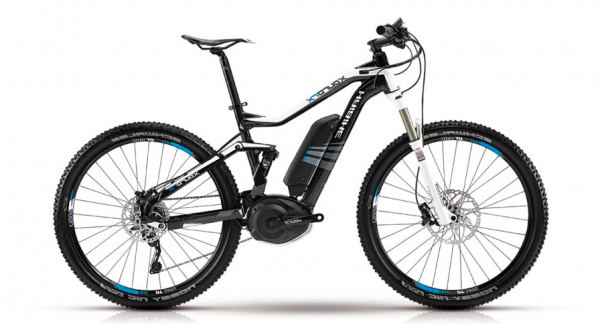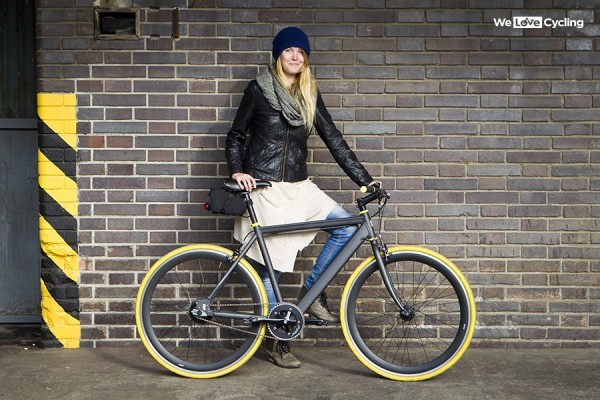You may have noticed, but e bikes are booming! They are the perfect solution if you want to commute to work, but not arrive all sweaty. Or if you have a secondary health issue, an e bike can breathe new life into the sport of cycling for you. They might even convince your significant other, wife, kids or parents to join you. Electric bicycles offer the same great benefits as traditional bicycles thanks to their cost efficiency, the health benefits and connection to a community. What should you know before buying your first electric bike? Let’s take a look.
Function
Electric bikes are designed for different people and purposes. Before you go shopping for one, take a moment to consider what is most important to you, or not relevant at all. Do you need a folding e bike? Where are you going to ride your e-bike most frequently? What type of terrain do you usually ride? Do you need to haul things with you? Or carry it up and down stairs if you live in an apartment? Once you’ve worked that out, communicate your needs, desired features and priorities to your local bike shop. They are the best equipped to find the right e bike for you.
There are many types of electric bikes. Each is geared toward various kinds of activities and uses thanks an efficient motor and battery combo. In many situations, e cargo bikes can even replace cars as they are designed to handle extra weight loads and even transport children to and fro. Whether you are in to mountain biking, trail and road biking, fat tire sand and snow riding, touring, work use or urban commuting, there is a quality electric bike out there for you.
E bikes mean you can say goodbye to public transport too. No more waiting for metro or bus lines packed like sardines during heavy traffic commute hours. E bike frames are beefed up to handle the greater force demands of the extra battery weight and greater overall speeds. This makes them heavier than a conventional bike. Increased loads require more braking power, so most electric bikes come with disc brakes.
Class designation and access
E bikes may look the same to the untrained eye, but they aren’t. Different characteristics under the hood place them it three distinct categories distinguished by their top speed, if they have a throttle, or are pedal assisted only.
Pedal assist (a.k.a. Pedelec in some circles) means your e bike uses power from its motor only as you pedal to make it easier and boost your speed. This e bike technology is accomplished through a torque sensor in the cranks. Any electric assist is increased or decreased based on the rider’s pedal power. This feature is usually available between three and five different levels of support visible on an LCD screen.
Throttles are exactly as you would think. Similar to a motorised vehicle, a push of a button, or a twist of the wrist, thrusts the bike forward. They give you extra power on demand, or a boost when you need it. Enjoy the free ride if you can since this technology is not allowed in some countries.
Class 1
Defined an electric bike with pedal assist only and no throttle. Their top assisted speed is 20 mph/32 kph. In most countries, the output of the motor is regulated and limited to 250 W, with a maximum speed up to 15 mph/25 kmh. When you reach this speed, the motor automatically switches off.
Class 2
An electric bicycle with a top speed of 20 mph/32 kph assisted by a throttle.
Class 3
E bikes that benefit from the “Pedelec” system only, have no throttle, and reach a max speed of 28 mph/45 kph at full power.
In all classes, an e bike’s motor power is restricted to maximum 750w or 1 horsepower. Laws and access to certain pubic parks, land and territories may limit the class of e bike allowed. This is particularly true when riding off road with electric mountain bikes (or e gravel), so don’t assume you can go anywhere you wish. Educate yourself before you purchase if public lands and trails near you are your destination of choice, or you may find your new e bike classified among other restricted motorised vehicles.
Type of motor: hub vs mid drive
There are two mains types of electric motor systems, hub motor and mid drive for e bikes. Both equate to less rider effort as soon as you start pedalling. Mid drive motors are usually located around the bottom bracket. When activated, force is applied to the bike’s drivetrain. Hub motors give their location. They can be found in the hub of any front or rear wheel. It’s easy to tell as the hubs will be much larger than with a normal bike.
When mounted at the bottom of the frame, near the cranks and pedals (crank motor assist), electronic sensors detect how hard you’re pedaling and can dole out the assistance accordingly. Typically, such bikes have a reputation for performance or doing well on steep hills, but can be a little on the noisy side depending upon the brand and type.
Front or rear hub motors tend to be very quiet, but often don’t handle hills as well as crank assisted (mid drive) systems. Typically the rear is used, and not the front wheel, to house the electric motor. Rear hub motors measure the force of pedaling and the chain against the cassette for any adjustments. Once the math is done, it applies an equal amount of energy to the rear wheel itself.
Front hub motors are less complicated, but any power they supply goes to a part of the bicycle not directly implicated in the drivetrain, the front wheel. It essentially pulls the rider along as long as they pedal. Some versions have set measurements of assistance, regardless of pedaling forces, and other include sensors that calculate that automatically.
The Battery

Lithium-ion batteries are everywhere, so it’s no surprise to find them powering e bikes. Overall capacity is measured in watt hours. E bike batteries can now be virtually imperceptible regardless of the frame size, cleverly hidden in a bike’s down tube, making e road bikes look like regular bikes for example. These are generally more expensive models with high-tech power sources that are smaller, lighter, charge quickly, and have a longer range. Any battery range degrades over time, holding less charge as they age. Look for reputable manufacturers such as Sony, Samsung or Panasonic that come with quality electric bikes. And make sure the battery is covered under warranty for at least two years.
Lithium-ion batteries are typically said to last 800 full charge cycles. That’s about three years of weekday commuting. They survive longer with careful use, so you should get at least 2,000 half-charge cycles. Those are pessimistic estimates though. In practice, a life of several years is quite easily achievable. A full charge typically takes between two and a half to six hours, depending on the the manufacturer, its capacity, and chemistry.
Range
The distance an e bike will go on one charge of the battery is called range. It’s perhaps the most important spec worth bearing in mind when choosing your new e bike. If your commute involves a big hill, you don’t want to run out of juice halfway up. Without power, an e bike is just a heavy bike. Range depends on battery capacity, speed, rider weight, the profile of the commuting route, the motor assistance level chosen and the percentage of given pedalling power.
If you’re going to do ten kilometres of daily commuting, only take occasional leisure rides or go a short way off road, you don’t need a 70 km/43 mile range. Nevertheless, you should buy a bike that provides more than you necessarily need because the range will drop as the battery ages and loses capacity.
Cost
Good e-bikes are not cheap, even compared to mid to high end carbon fibre road bikes. A keen cyclist can pick up a very basic model, but how long are they going to be happy with it? The sport of cycling is already expensive when purchasing an average bike with a quality frame, functional brakes, and suspension. Bicycle component quality is not always clearly defined by the price tag. But when buying an e bike you have to spend considerably more money for the technology, battery and motor. Don’t be surprised by its higher price, a better bike lasts much longer and will provide you with a better ride experience.
Test Ride
Perhaps the most important (and fun) part of buying an electric bike is taking it for a spin. Actually riding an electric bike allows you to put aside scepticism, reviews, and research and just answer the most basic question: Do I love it? If so, then start looking at other points. Does it climb hills with less effort in the way I need it to? How does it fit my budget and lifestyle? What kid of value and functionality am I getting for the money?
If you aren’t yet ready to abandon your regular bike or car on a daily basis, aftermarket conversion kits exist to turn any traditional bike, even folding bikes, into an electric bicycle too.
![What You Should Know Before Buying Your First E-Bike [UPDATED in 2021]](https://d2p6e6u75xmxt8.cloudfront.net/2/2016/04/331424242_4144224.webp)









